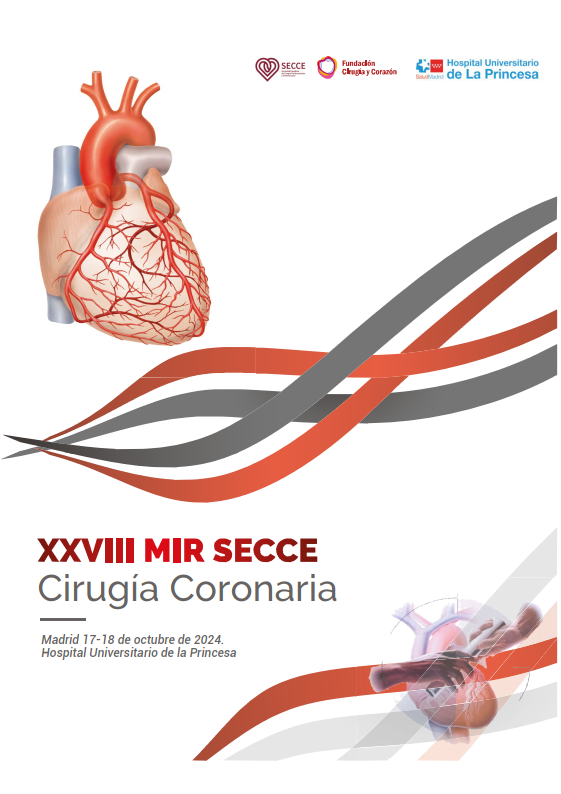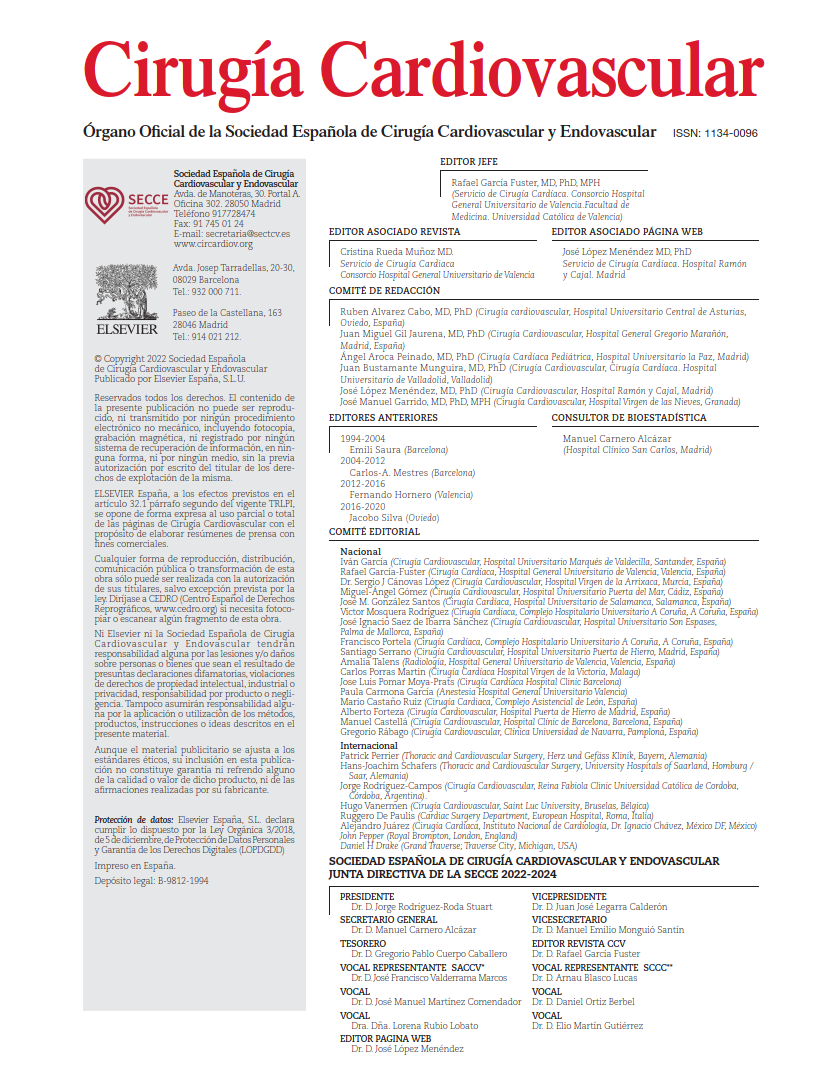We all know it: 5.5 cm, the magic number. The point at which “yes” becomes the answer, and before which “not yet” prevails, when deciding on elective intervention for patients with ascending aortic aneurysm without familial connective tissue disorders. It is enshrined in clinical practice guidelines, consensus documents, and hospital protocols. It is repeated in conferences and taught as if it were a natural law. Rarely has this threshold been challenged with clinical or scientific arguments. Undoubtedly, it has been a useful tool for standardization, but it has also fostered an illusion of certainty. It has turned into a filter that oversimplifies a complex decision. But what if size alone is not enough? What if this criterion, entrusted with so much responsibility, is overlooking what truly matters? Because while centimeters provide a number, the patient embodies a story.
Makarem et al. have advanced this debate with a compelling contribution: the TITAN:SvS (Treatment in Thoracic Aortic Aneurysm: Surgery vs Surveillance) trial. In our view, this study was needed to redirect the conversation around surgical indication for ascending aortic dilatation. This prospective, international (Canada and United States), multicenter trial successfully collected real-world data on a clinically ambiguous question. It included 618 patients with ascending aortic aneurysms measuring between 5.0 and 5.4 cm. Patients were divided into three major cohorts: 128 randomized to surgery or surveillance, 229 undergoing surgery without randomization, and 261 clinically monitored without initial intervention.
However, although the study provides very relevant insights, it does not deliver definitive evidence on the central issue. It faces the same challenges common to cardiovascular surgery research in general, and aortic surgery in particular: achieving full randomization. Only 21% of patients were truly randomized. Far from being an irreparable weakness, this highlights something deeper—the constant tension between evidence-based medicine and clinical judgment. Convincing both a surgical team and a patient to allow treatment allocation by lottery is no easy task. In Canada, randomization rates were higher; in the United States, more patients were assigned according to direct clinical decision-making. Thus, the study does not merely present data; it also illustrates cultural differences in how uncertainty is approached.
One of the most revealing findings of TITAN:SvS is that the mean aneurysm size was virtually identical across groups: 5.23 cm in surgically treated patients and 5.21 cm in those under surveillance. This partly dismantles the assumption that size alone dictates the indication. If diameters were nearly the same, what ultimately determined surgical referral? The answer lies in clinical judgment. Operated patients were, on average, younger (61 years vs 67 years in the surveillance cohort) and had fewer comorbidities—in other words, a more favorable surgical profile. This implicit stratification reveals something striking: the same aneurysm is managed differently depending on who evaluates it and in which setting. The decision is not only medical; it is institutional, cultural, and even emotional. The measurement obtained by CT informs the decision but does not dictate it. Final judgment occurs at the bedside.
The mean follow-up was 2.8 years. What happened during that time? There were no dissections or ruptures in any group. Mortality remained low (<3%) both among those operated and those monitored. Elective surgery proved safe in appropriately selected patients. This could be interpreted as validation of surveillance in well-chosen individuals, and to some extent it is. Yet the follow-up duration is short. Two or three years are insufficient to assess the cumulative risk of dissection or sudden death. This is critical: in aortic disease, the true value of prophylactic surgery lies in its long-term horizon.
The study also has important limitations: only 22% of patients were women, preventing sex-specific analysis; no patients with genetic syndromes or molecular markers were included; anatomical variables such as aneurysm morphology were not assessed; growth rates were not analyzed; and advanced functional imaging was not employed. Consequently, while the results are encouraging, they cannot support definitive conclusions.
Prophylactic surgery is, in essence, a rational wager: to intervene today in order to prevent catastrophe tomorrow. Yet it cannot be a blind bet, nor one reduced to a single extreme simplification. TITAN:SvS reminds us that a substantial proportion of decisions are not made by algorithms but through experience, context, and responsibility. A patient with a 5.2 cm aneurysm is not simply “not a candidate” because the threshold of 5.5 cm has not been reached; candidacy depends on a complex combination of age, functional reserve, operative risk, hospital environment, life expectancy, and yes—also the diameter. Moreover, surgical indication demands what is least emphasized but most used in practice: informed and shared clinical judgment. This study does not propose replacing one threshold with another; it urges us to interpret that threshold with less rigidity and to accompany it with real clinical context. There is no definitive formula—only individual patients and decisions requiring clinical dialogue between surgeons, across specialties, and with the patient.
COMMENTARY:
From a strictly methodological perspective, the TITAN:SvS study carries biases that cannot be ignored: randomization was suboptimal; the cohorts were clinically distinct at baseline; and there are still no robust long-term data on dissection, rupture, or mortality. In fact, those expecting this kind of trial to resolve all uncertainty would be approaching it incorrectly, and would inevitably end up disappointed. The true value of TITAN:SvS is not in telling us what to do with a 5.3 cm ascending aortic aneurysm. Rather, it reminds us that no one truly knows for certain. This is unsettling, because for years the 5.5 cm threshold gave us a reference point that allowed for relatively secure decision-making. But clinical practice is not about exact cutoffs: the risk of rupture does not change abruptly at 5.49 vs 5.51 cm. Real-world practice is a spectrum of gray areas, of reasoned intuition, and of patients who do not fit neatly into boxes. TITAN:SvS does not abolish the threshold; it humanizes it. It tells us: “be cautious, the decision is not just about the number.” In a field as protocol-driven as cardiac surgery, this message deserves careful attention. Ultimately, between operating too early and intervening too late, the balance does not come from a ruler—it comes from judgment. Judgment that blends experience, training, institutional context, and above all, clinical responsibility. At the end of the day, it is not about replacing one number with another, but about understanding that no number, on its own, is sufficient to guide sound decision-making.
REFERENCE:
Makarem A, Appoo JJ, Boodhwani M, Guo MH, Brownlee S, Demers P, et al.; TITAN:SvS Investigators. Patient Selection for Surgery vs Surveillance in Moderately Dilated Ascending Aorta: Insights From Treatment in Thoracic Aortic Aneurysm: Surgery versus Surveillance (TITAN:SvS), an International Prospective Trial. Ann Thorac Surg. 2025 Jul;120(1):25-32. doi: 10.1016/j.athoracsur.2025.01.020.



